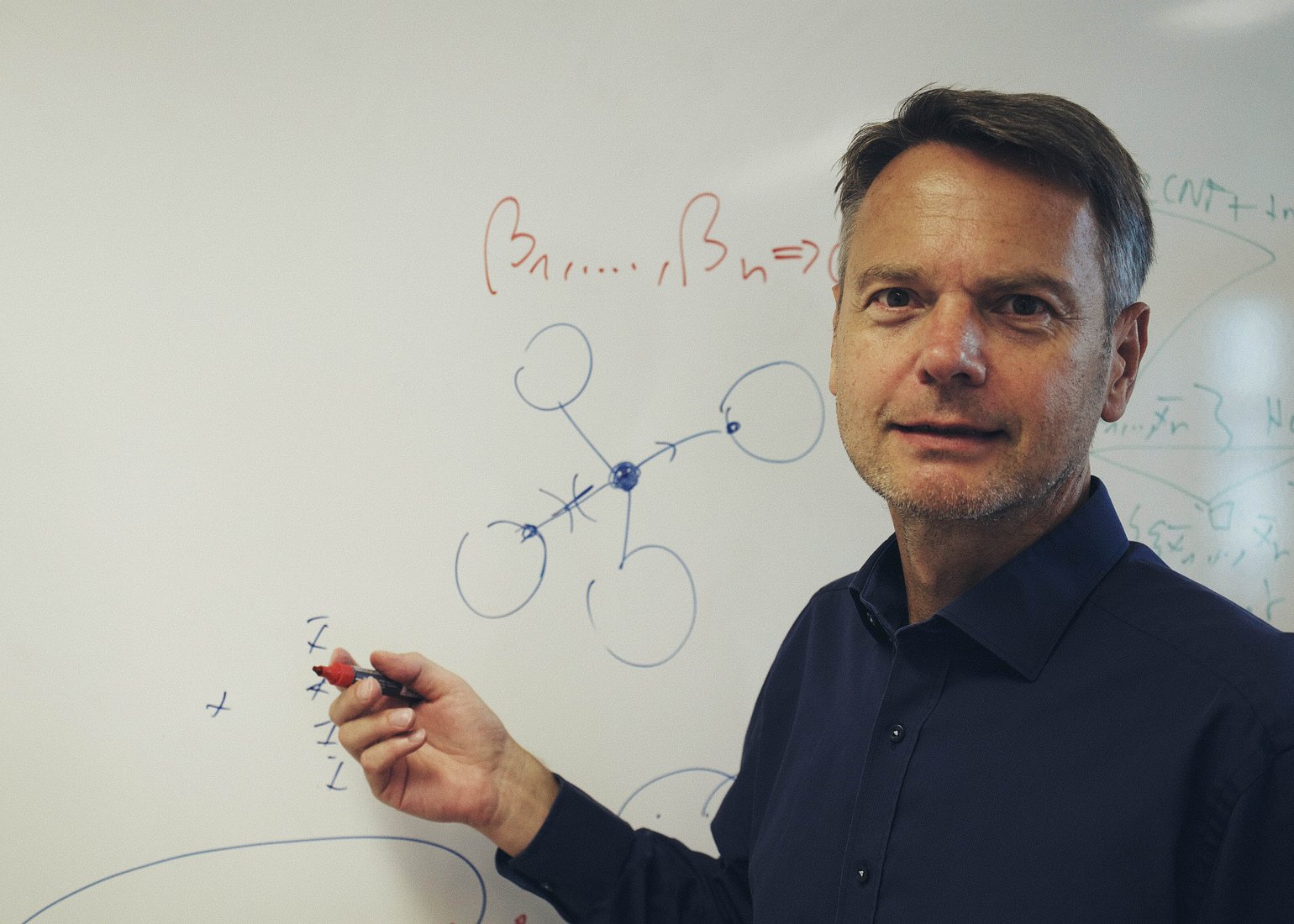#5QW: Stefan Szeider
Although interested in computers in his teenage days, Stefan’s real entry point into Informatics was when reading Gödel, Escher, Bach: an Eternal Golden Braid.

About
Stefan Szeider is a full professor at our faculty, head of the research unit Algorithms and Complexity, and chairs the Vienna Center for Logic and Algorithms VCLA. He was the first Austrian computer scientist who received an ERC award (2009). In his research, Stefan combines algorithmic and logic-based methods to solve hard computational problems.
How did you get in touch with Informatics?
As a teenager, I had some hands-on experience with the early microprocessors. But my real entry point into Informatics was indirect. When I was about to enrol at university, the book Gödel, Escher, Bach: an Eternal Golden Braid came out, and I was immediately fascinated by the subject. I said to myself: that is what I want to do! So, I studied Mathematical Logic at Uni Wien and pursued a Ph.D. in Mathematics, working at the Austrian Academy of Sciences. Already as a student, I was fascinated by the algorithmic/Computer Science aspects of logic. Only later, when I joined Stephen A. Cook’s group in Toronto as a postdoc, I became a computer scientist officially.
What makes Informatics so fascinating for you?
Algorithms and computational problems are fascinating objects to study. They are virtual and, in a certain sense, invisible; you cannot touch them. However, one can build real and practical systems with algorithms, which can substantially impact our lives. There is no boundary to one’s curiosity, imagination, or creativity. It is highly satisfying to find a clever solution to a challenging algorithmic problem, first on paper. Then, making it run on a computer provides a second source of satisfaction. One can use logical, mathematical, and data-based methods to develop and study algorithms, all together give a complete picture. Frederick Brooks compared a computer scientist with a poet. He said that both build castles in the air, from the air, creating by exertion of the imagination. Few media of creation are so flexible, so easy to polish and rework, so readily capable of realizing grand conceptual structures.
Which talents should people bring along for a career in Informatics?
Creativity, the capability of thinking abstractly, and having pleasure in problem solving. Computer Science is much more than sitting in front of a computer and writing programs. I could do the essential parts of my research when I sit with pen and paper on a bench in a park. This kind of work is often described as Computational Thinking, an abstract way of problem-solving that isn’t tied to a computer. One can already involve young children, even in preschool age, with concepts and ideas of Computational Thinking, thus perhaps seeding future computer scientists.
What makes you happy in your work?
As a researcher, I like the conceptual work and the challenge to solve a complex problem. It’s fun to discuss ideas in a team with colleagues and students, where ideas emerge from the exchange with each other. Working with bright young people, like my Ph.D. students and postdocs, is a privilege. It keeps me dynamic and open. I enjoy the freedom and flexibility of doing basic research in an academic setting. This allows me to switch to an entirely new and exciting research topic and dive into a new domain of problems and questions.
Why do you think there are still so few women in Informatics?
One reason is undoubtedly the unsatisfactory way of how Informatics is taught at school. Another reason is the dominance of male role models of successful computer scientists. Within the public outreach project ADA—Algorithmen Denken Anders/Algorithms Think Differently, I initiated the program Tagebuch der Informatikerin/Diary of a female Computer Scientist to promote female role models by organizing informal discussions between female colleagues and high school students.
Discover the whole #5QW series.
Curious about our other news? Subscribe to our news feed, calendar, or newsletter, or follow us on social media.
